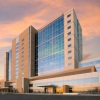DOTmed Industry Sector Report: Bone Densitometers Sales and Service
by Barbara Kram, Editor | August 26, 2008
Sales down in non-hospital settings
Despite the many factors favoring bone densitometry, reductions in Medicare reimbursement have put a damper on the market. (Note that as of this writing, legislation is pending in Congress that may reinstate higher funding levels. For updates as we get them, visit DOTmed.com's Weekly Online News.) Meanwhile, many vendors are reporting that sales are flat for both new and pre-owned machines.
Training and education based on your needs
Stay up to date with the latest training to fix, troubleshoot, and maintain your critical care devices. GE HealthCare offers multiple training formats to empower teams and expand knowledge, saving you time and money

"A lot of bone density machines have already been sold, so there is a saturation factor in the last few years. Couple that with DRA [reimbursement cuts] and you have a flat if not slightly shrinking market," said David Denholtz, CEO, Integrity Medical, Fort Myers, FL. "You hear gloom and doom but there is still a market there."
"Demand is going to pick up [for pre-owned equipment]. As the economy is turning down, more people are going to buy used versus new equipment," said Gugel.
In terms of new equipment sales, two separate markets - hospital versus non-hospital - have very different outlooks since the hospital market is not affected by cuts in reimbursement.
"When you are focused on selling to private practices, and their reimbursements start to get cut, everybody takes a wait-andsee approach. They don't want to invest if there are going to be major negative changes," said Hologic's Jenkins. "So it's been a shift from selling to the primary care physician and the specialties, to really renewed growth in radiology. We did hit a valley as far as [sales] performance, but are hiking back out and seeing increases in the U.S. as more hospitals purchase the units."
GE has enjoyed steady sales growth (about eight percent in recent years) in the hospital market, but in non-hospital settings, Andreasen observed, "there's definitely a lower uptake." However she noted new markets are emerging for bone density testing. "We see new customers entering this market and we have a new focus on secondary osteoporosis, which is caused by breast and prostate cancer treatment. So we do see a new customer group as the awareness grows and scientific evidence becomes available stating how important it is to monitor bone density in cancer patients."
The service market is blossoming
Both GE and Hologic offer state-of-the-art fan beam DXA technologies that will replace the older designs like the pencil beam. The new units are amazingly capable and can even spot vertebrae fractures, which might lead to another dimension of osteoporosis assessment. But the shift to cutting-edge approaches raises concerns over ongoing support for the installed base of older technologies, including the GE Lunar DPX and Hologic QDR 4500.









